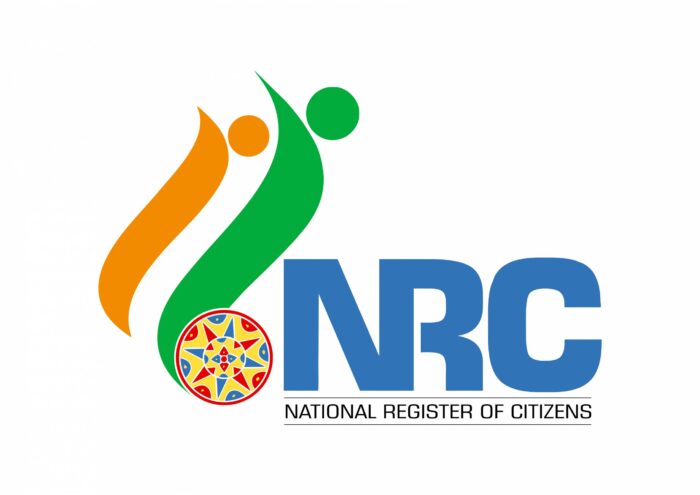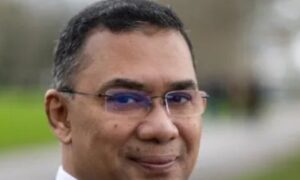
Beyond doubt August 31 of 2019 will go down as a water shed in Assam’s troubled history for one fact – the Govt did at last release a list of 3.11 crore residents eligible for “inclusion” in the National Register of citizens out of about 3.30 crores of people who had applied and a list of 19 lakhs people who have not been not found eligible and hence put in the ” excluded ” category – down from a list of 44 lakhs under July 30,2018 draft list. This was the outcome of an exercise in accordance with the procedure laid down under the 2003 Rules made under the Citizenship Act 1955 and the first of its kind in history of modern India.
This ” benchmark”has, at long last, set at rest speculations about the size of illegal migrants from Bangladesh or extrapolation of data of increase in the size of the electorate in some legislative Assembly or Loksabha constituencies to project the number of such migrants illegally residing in the state. That this legal and administrative process had been” monitored” by the Supreme Court from 2014 accorded it great importance, sanctity and international attention.
It may be recalled that the “anti foreigners” movement in Assam began in late 1970’s when the draft electoral rolls of Mangaldoi Loksabha seat which fell vacant due to demise of the sitting MP Hiralal Patowari, had shown increase in the number of electors which was viewed ” abnormal” by several Assamese organizations and hence attributed to illegal migration. The rest as they say is history .
The hard core Assamese supporters of the anti foreigners movement found the number of the ” excluded” disappointing as they expected it to be at least close to the 2018 draft list. The Govt of Assam even moved to the Supreme Court for a 20% test check of the persons who are in the “Included list” of infiltration prone areas bordering Bangladesh which the Apex court didn’t agree. Presently the matter is stuck in a limbo partly due to the Covid-19 pandemic but mainly due to the state failure to issue rejection slips to persons in the ” excluded” category even when elections are due in the next year and the ” foreigners” would be a live issue then .
Therefore, what must be addressed now by the centre and the state Governments is very early issuance of speaking orders by the concerned office indicating the grounds for rejection of each and every application to enable them to prefer appeal before the Tribunals ; and speedy, fair, just and transparent disposal of such appeals as there’s a provision for appeal to the High court against the order of the Tribunals. However, over all progress has been tardy because though 220 Tribunals could be in position and the supporting staff have been recruited , the Tribunals are unable to start their work as the rejection slips have not been issued by the concerned local NRC authorities even after one year of publication of the Excluded list. So the NRC exercise is incomplete and in the meantime for want of a dis-aggregated rejection data speculations are afloat such as 4 lakhs of them didn’t even bother to respond to the notice of the authorities as they are temporary residents from other states or 2.5 lakhs of long time ethnic Nepalis etc.
There is also a view that about half a million Bengali Hindus have been excluded well above the number of Bengali Muslims and scores Hindi speaking and other Hindus and even indigenous tribals and the ethnic Assamese have been put in the excluded category. This goes against the perception that lakhs of Muslims from Bangladesh have been infiltrating into Assam even after creation of Bangladesh which must be disquieting for the BJP as it cannot afford to see Hindus declared as foreigners — election or no election and especially after enactment of the Citizenship Amendment Act which has been notified in January 2020 to provide for grant of citizenship to persecuted Hindus of Bangladesh who might have sought refuge in India on or before December 31,2014.
This being the ground reality even after one year of publication of the list, the ball is really in the court of the state government ;and unless the process of issuance of rejection slips- the very first step to resolve the issues begins soon, Assam and the north east have to live with the ” foreigners problem” for months if not years impeding in the process prospects of any real ” development”.
In conclusion,it is somewhat frustrating to note a lack of historical perspective in the media reporting of this issue ; such as ignoring the fact Assam since its very inception in 1874 as a Chief Commissioner’s Province had always an East Bengal part comprising the populous Goalpara, Cachar and Sylhet Districts which were ” transferred” to Assam in 1874 when it was carved out of Bengal Presidency;and that even after Partition Karimganj part of Sylhet and the other two Districts remained in Assam. Roughly 11 out 33 Districts of today’s Assam are in this group. The Bengali people are not all migrants in Assam; and thus the post partition movement of the Hindus to these Districts was much like the movement of Sikhs and Hindus from Lahore to Amritsar in Punjab .
The other aspect is the complex religious demographics of Assam as Hindus comprise about 61% of the population as per 2011 census and ethnic Assamese Hindus only half of the same according to a study referred in an article by HND as,a former Chief Secretary, Govt of Assam published in Perilous journey ( Manohar 2011) by Rakhee Bhattacharya and Sanjay Pupilka of the Maulana Abul Kalam Azad Institute of Asian studies, Calcutta. Out migration of Bengali and other Hindus from the late 1970’s must have been an important cause of the fall of the Hindu population and this fact alone underscores the political importance of all non Assamese Hindu Groups and especially the Bengali Hindus in present day electoral politics of Assam. The challenge before the diverse population of Assam in the 21st century is to reconcile history with demography and an early resolution of the foreigners issue would be a firm step to this direction.
[the_ad id=’22723′]


















